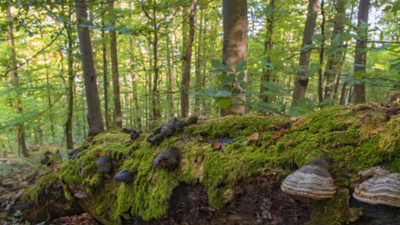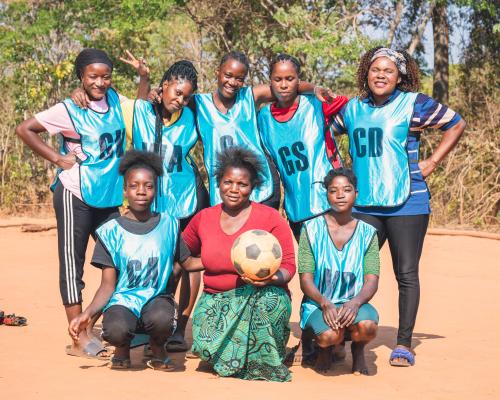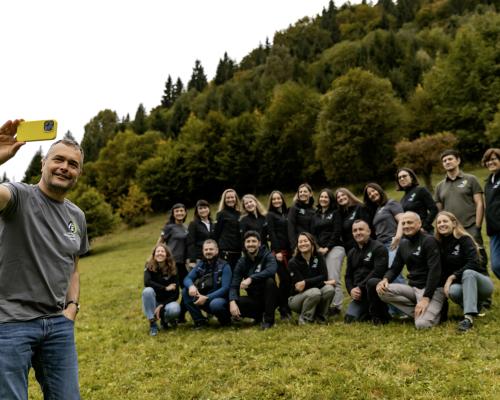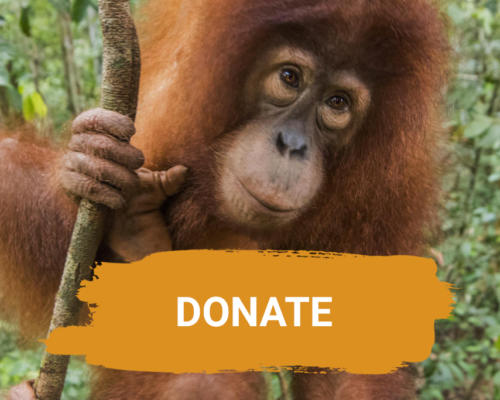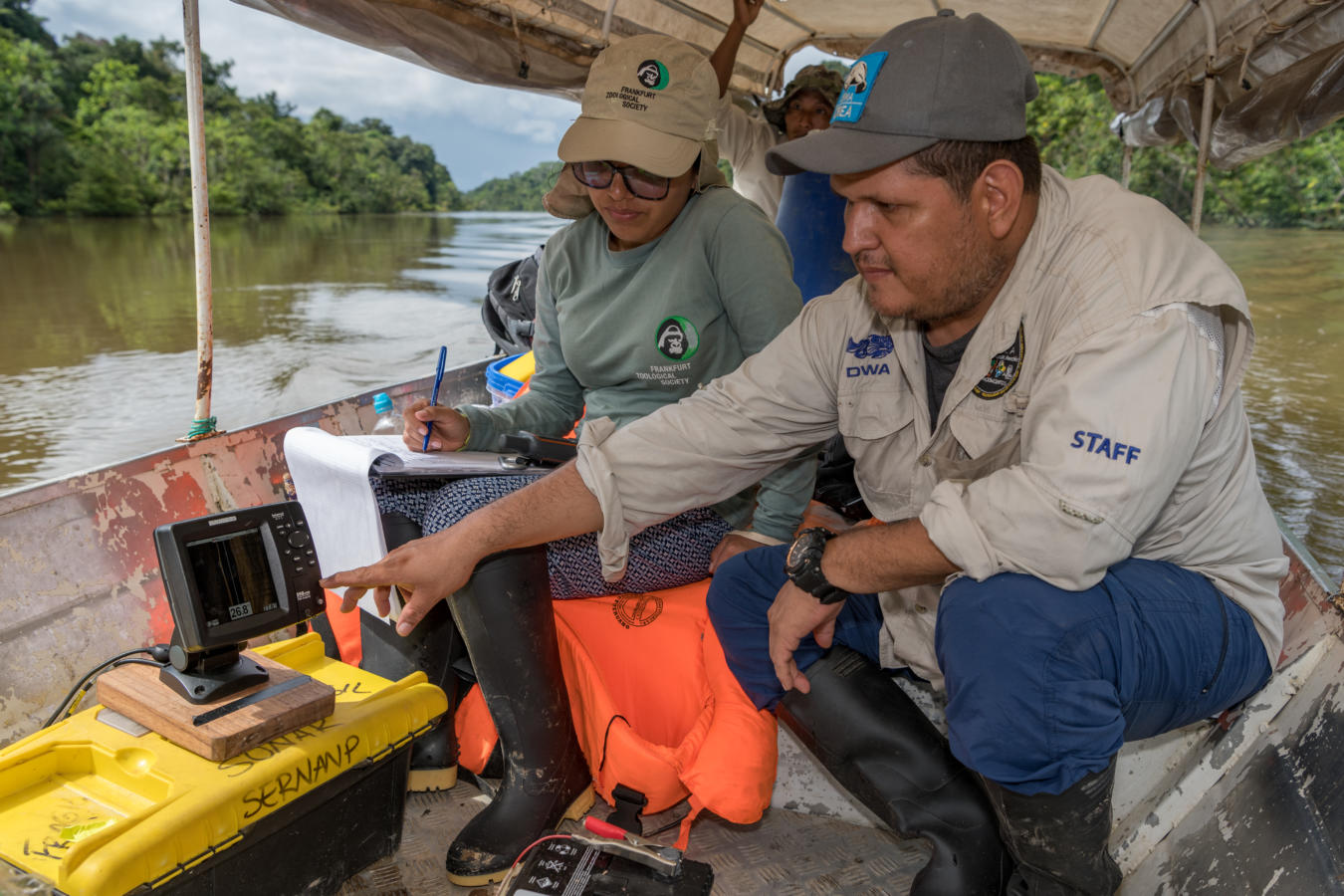The largest freshwater mammal in South America, the Amazonian manatee is not easy to find, especially in a National Park roughly the size of Yellowstone. But protecting this species is important. FZS Peru and partners have a way to find them.
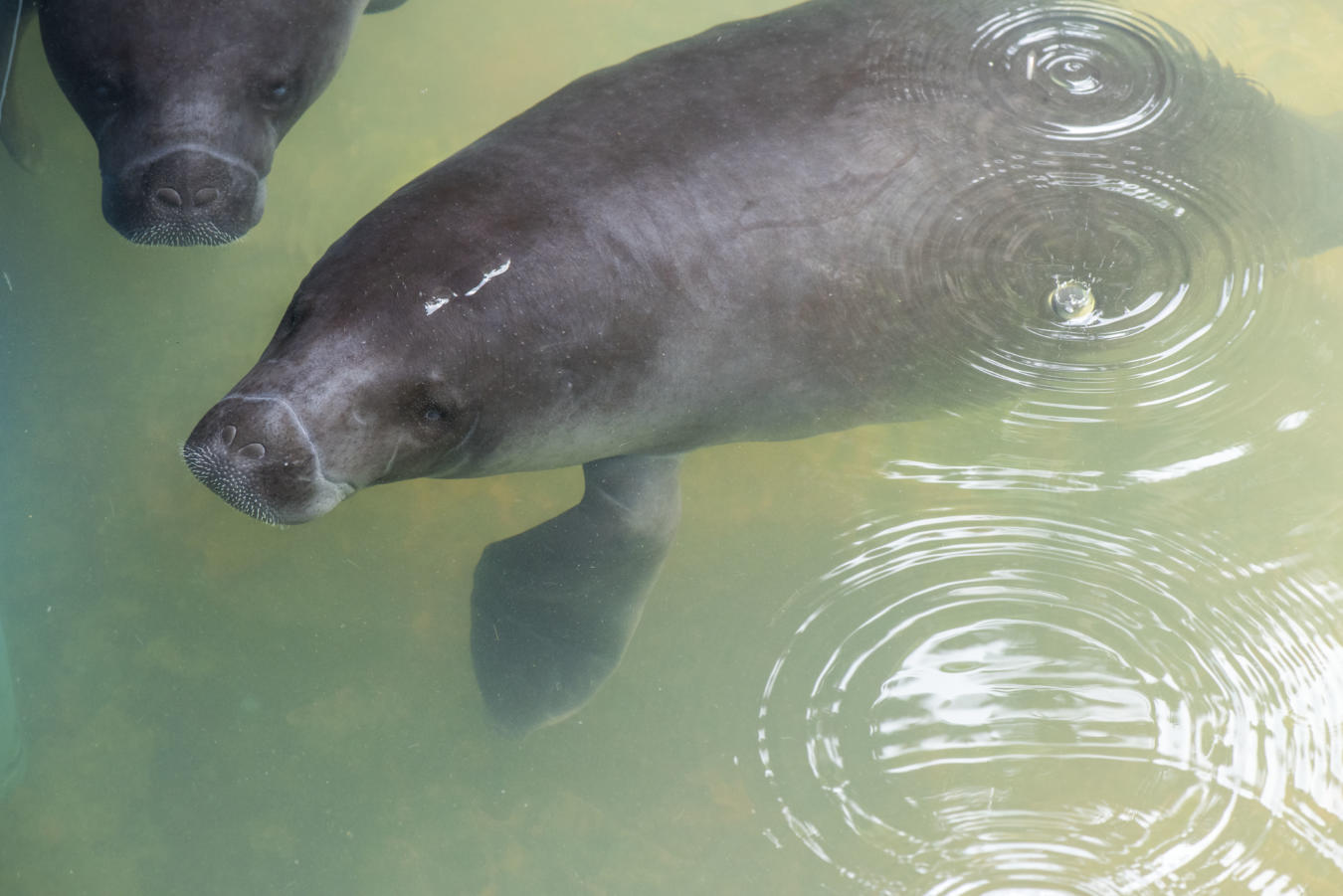
Where are the Amazonian manatees?
Amazonian manatees (Trichechus inunguis) are the largest aquatic freshwater mammal in South America, measuring around 2.5 meters in length and weighing on average 500 kg. Surprisingly, they are the smallest of the sirenian species, the only ones found in freshwater environments and the Amazon basin. The animals are slow to reproduce with one calf born per mother approximately every three years.
These animals play important roles in aquatic ecosystems. They can eat up to 50 kg of plants per day or 8% of their body weight. The resulting feces contribute to the amount of nitrogen, an important plant fertilizer, in the rivers, oxbow lakes, and streams that they inhabit. The choice of plants that they eat also affects which ones thrive in the area.
Unfortunately, this species has been in decline due to global warming, habitat loss due to, for instance, deforestation, as well as hunting and fishing. The International Union for Conservation of Nature and Natural Resources (IUCN) predicts that the species will experience a 30% decline within the next three generations. These pressures and expected decline have led to the Amazonian manatee being classified as vulnerable by both the IUCN and Peruvian legislation.
This species is now protected by national Peruvian laws and within management plans, such as the one for Yaguas National Park. Within this plan, the aim is to protect the species by prioritizing the monitoring of their whereabouts and then implement needed actions based on those results.
Despite the benefits of the species and its protection, not much is known about the Amazonian manatee. It is evasive and it lives in water with high turbidity or murkiness, within which it can easily hide thanks to its dark coloring. This lack of visibility and its declining populations within the Amazon basin, make it difficult to research.
Since 2018 FZS Peru and park rangers have been working together in Yaguas National Park, an area of more than 8,689 km² consisting of rainforest, 3,000 species of plants, and over 700 species of vertebrates. The team has been scouring the water bodies in Yaguas looking for manatees using a tool called side scan sonar which uses sound waves. The tool helps the researchers locate animals, even when they are hiding in murky water.
Despite this useful tool, it is still not easy to find manatees. Sometimes the team needs to travel great distances. In 2021, 190.4 km were covered by the team to find the animals, using direct monitoring, such as sonar, and indirect by looking for visual traces of the mammals. Their search revealed 11 individuals and 108 cases of indirect proof of the species within Yaguas National Park. This is roughly 1.3 manatees found every 10 kilometers.
Amazonian manatee populations serve as indicators of the conservation status of the ecosystem. As such, the FZS Peru team is working with the Yaguas National Park authority as well as other parts, to create a manual on how to process data collected during Amazonian manatee monitoring. The aim of the manual is to then standardize the criteria of how the data is processed.


